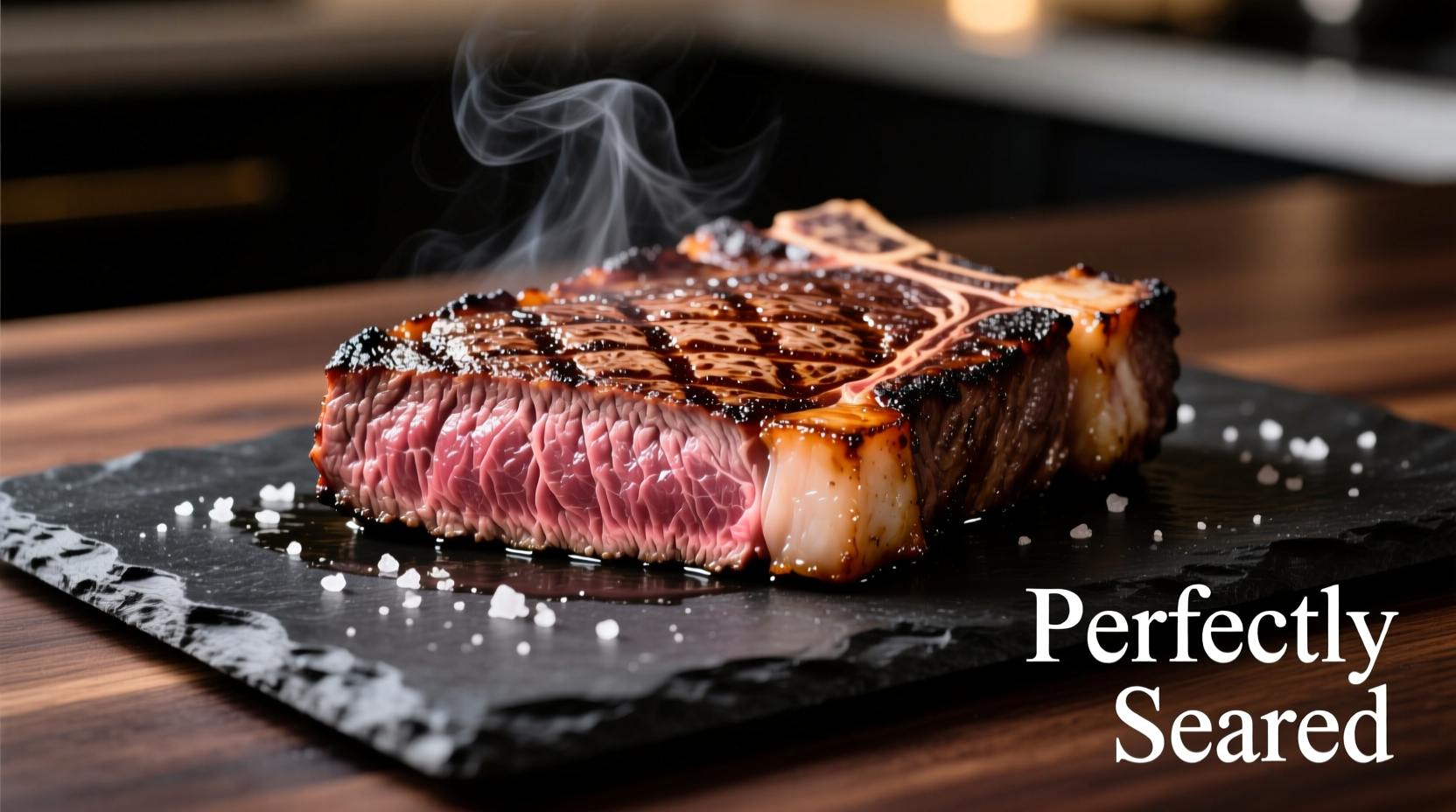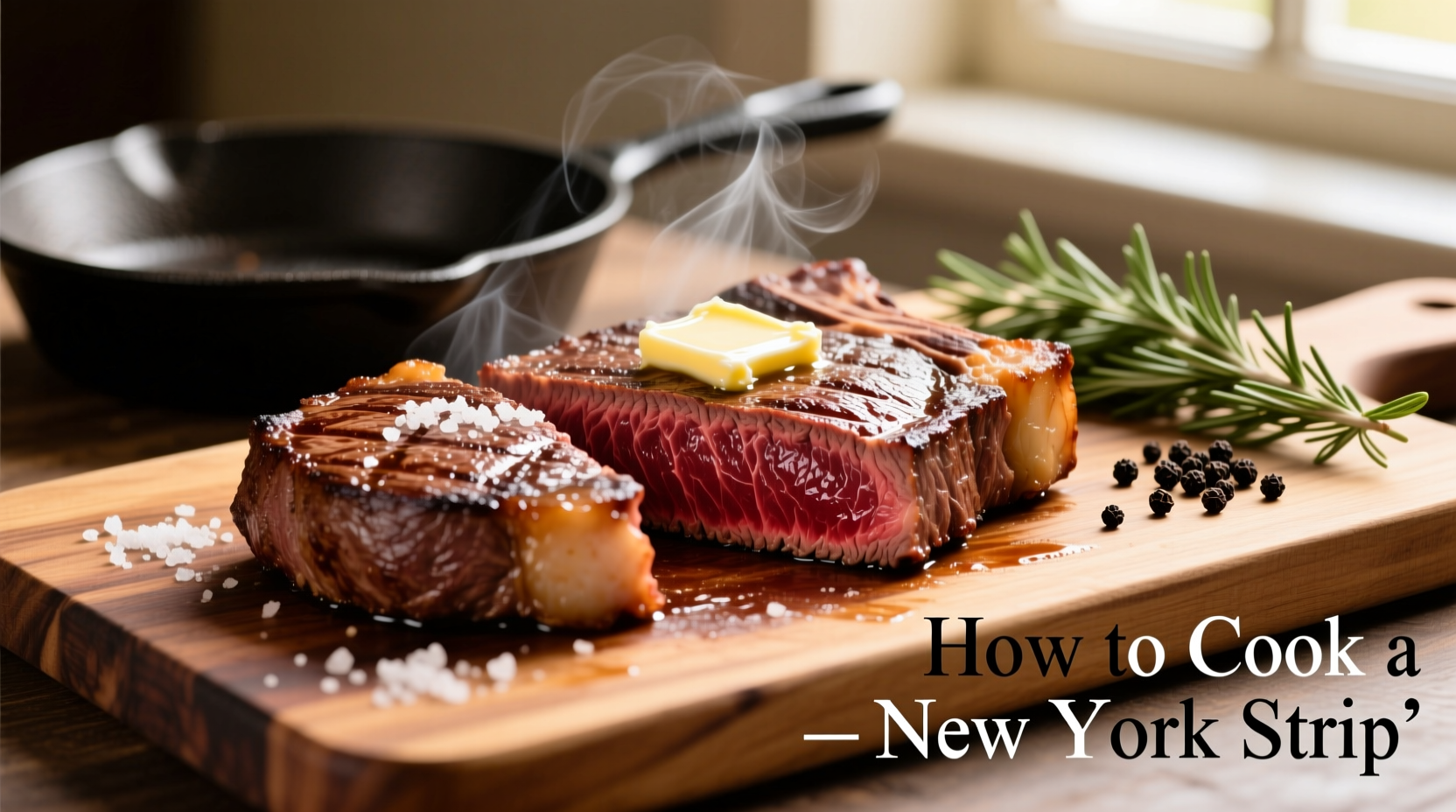The perfect New York strip steak requires proper selection (1.5 inches thick, well-marbled), seasoning with coarse salt 45 minutes before cooking, searing at 450°F–500°F, reaching internal temperatures of 125°F for rare or 135°F for medium-rare, and resting 8–10 minutes before slicing against the grain. This method delivers a flavorful crust with tender, juicy interior every time.
Mastering the New York Strip: Your Path to Steakhouse-Quality Results at Home
Cooking a flawless New York strip steak isn't reserved for professional chefs. With the right techniques—understanding heat management, proper seasoning timing, and precise temperature control—you'll consistently achieve restaurant-quality results. This guide walks you through each critical step, eliminating guesswork so you can serve perfectly cooked steak that impresses every time.What You'll Need Before You Start
Before touching that steak, gather these essentials:- 1.5-inch thick New York strip steak (minimum 22 oz)
- Coarse kosher salt and freshly ground black pepper
- High smoke-point oil (avocado or grapeseed)
- Heavy cast-iron skillet or grill with thermometer
- Instant-read thermometer (critical for accuracy)
- Metal spatula and tongs
- Wire rack for resting
Selecting the Right Cut: Quality Starts at the Butcher Counter
Not all New York strips deliver equal results. USDA Prime grade provides superior marbling compared to Choice grade, yielding noticeably juicier outcomes. Look for steaks with even marbling throughout—thin white fat streaks dispersed within the red meat—not just along the edges. Thickness matters significantly; steaks under 1.25 inches often overcook before developing a proper crust. According to the USDA Agricultural Marketing Service, proper grading ensures consistent quality standards for beef products.Preparation: The 45-Minute Rule Most Home Cooks Miss
Seasoning timing dramatically impacts results. Apply 1 teaspoon coarse kosher salt per pound of steak 45 minutes before cooking—not immediately before. This allows salt to penetrate deeper while drawing out surface moisture that would otherwise steam the steak. Pat dry thoroughly right before cooking. "Most home cooks season too late or use fine salt that dissolves too quickly," explains Antonio Rodriguez, chef and cooking techniques specialist. "The 45-minute window creates optimal surface drying for maximum Maillard reaction."| Doneness Level | Target Internal Temp | Visual Indicators | Texture Test |
|---|---|---|---|
| Rare | 120°F–125°F | Bright red center | Very soft, yields easily |
| Medium-rare | 130°F–135°F | Warm red center | Soft with slight resistance |
| Medium | 140°F–145°F | Pink center | Firm with springy resistance |
| Medium-well | 150°F–155°F | Small pink center | Firm with minimal give |
Cooking Methods: When to Choose Stovetop vs. Grill
Your cooking environment determines the optimal approach: Cast-iron stovetop method (ideal for consistent results): Heat skillet over medium-high for 5 minutes until smoking slightly. Add 1 tablespoon oil, then place steak in pan away from you to prevent oil splatter. Sear undisturbed for 3–4 minutes until deep brown crust forms. Flip and repeat. For thicker cuts, finish in 400°F oven for 4–6 minutes. Grill method (best for summer cooking): Create two-zone fire with one side at 500°F for searing, the other at 350°F for finishing. Sear 3–4 minutes per side over direct heat, then move to indirect side until reaching target temperature. Pro tip: Never press down on the steak—this forces out precious juices. A study by the USDA National Institute of Food and Agriculture confirms that pressing reduces moisture retention by up to 15%.The Critical Resting Phase: Why 8 Minutes Changes Everything
After cooking, transfer steak to a wire rack (not a plate—this prevents steaming the bottom). Tent loosely with foil and rest for 8–10 minutes. During this time, internal temperature rises 5°F–10°F (carryover cooking), and juices redistribute throughout the meat. Cutting too soon releases up to 30% of those flavorful juices onto your cutting board.Avoid These 3 Costly Mistakes
- Moving the steak too soon: Wait until it releases naturally from the pan before flipping. If it sticks, the crust hasn't formed properly.
- Guessing doneness: Relying on touch alone leads to inconsistent results. An instant-read thermometer costs less than one ruined steak.
- Slicing with the grain: Always cut perpendicular to the muscle fibers (against the grain) for maximum tenderness.

Serving Suggestions That Elevate Your Steak
While New York strip shines with minimal accompaniments, these professional touches enhance without overwhelming:- Add compound butter (½ cup softened butter + 1 minced garlic clove + 1 tbsp chopped rosemary)
- Pair with roasted garlic mashed potatoes and sautéed mushrooms
- Finish with flaky sea salt and a drizzle of high-quality olive oil
Frequently Asked Questions
How long should I cook a 1.5-inch New York strip for medium-rare?
Sear 3–4 minutes per side in a 450°F–500°F pan, then check temperature. Most 1.5-inch steaks reach 130°F–135°F internal temperature in 8–10 minutes total cooking time. Always verify with an instant-read thermometer rather than timing alone.
Should I marinate a New York strip steak?
Generally no—high-quality New York strip benefits more from proper seasoning than marinating. The cut's natural flavor shines with just salt and pepper. Acidic marinades can actually toughen the exterior proteins. If using marinade, limit to 30–60 minutes maximum to avoid texture changes.
Why is my New York strip tough after cooking?
Toughness usually results from one of three issues: overcooking beyond 145°F internal temperature, slicing with (instead of against) the grain, or using a dull knife that tears fibers. Always check temperature early and rest properly before slicing.
Can I cook a frozen New York strip steak?
Yes, but with adjustments. Sear frozen steak 1 minute longer per side to develop crust, then reduce oven temperature to 325°F and cook 25–35% longer than thawed steak. The USDA Food Safety and Inspection Service confirms frozen cooking is safe when internal temperature reaches 145°F with 3-minute rest.











 浙公网安备
33010002000092号
浙公网安备
33010002000092号 浙B2-20120091-4
浙B2-20120091-4